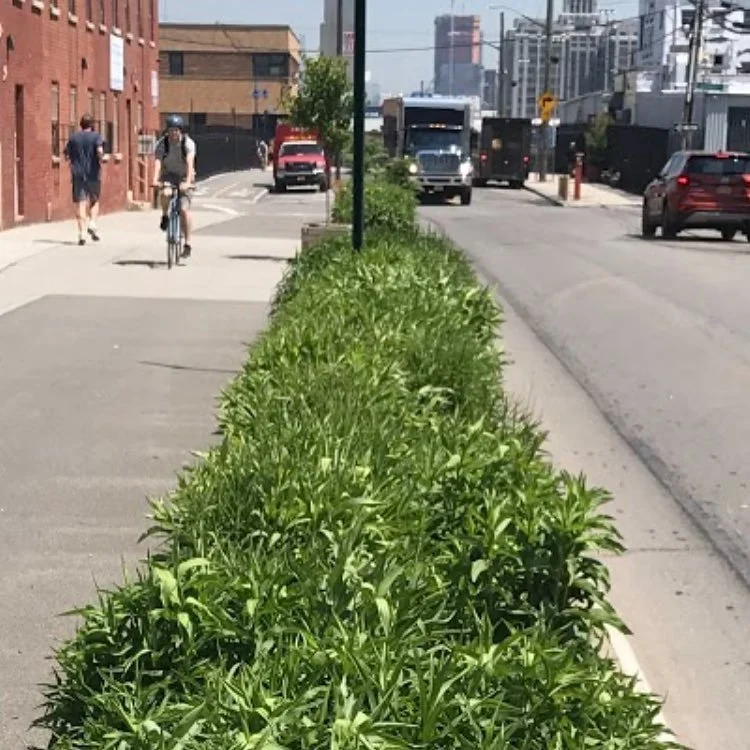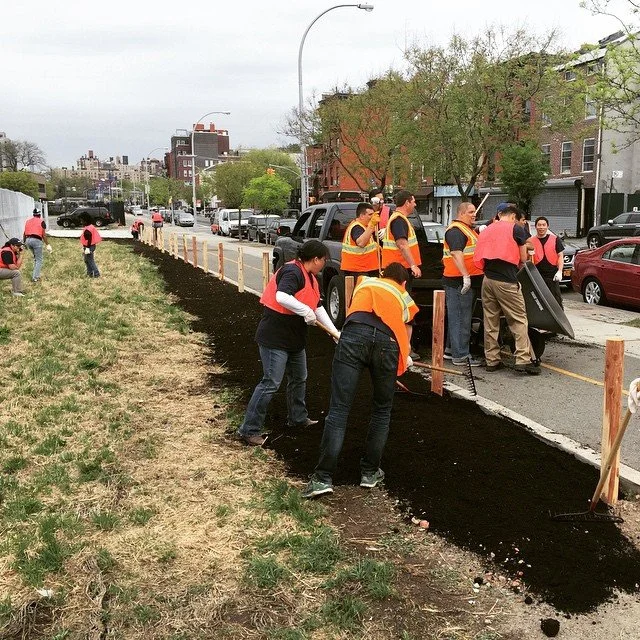Brooklyn Greenway Pollinator Strip
Built in 2013, this project, developed by One Nature in collaboration with the Brooklyn Greenway Initiative, was deeply inspired by ecological plant communities identified during botanical surveys of nearby vacant lots. These surveys uncovered resilient native species that had thrived despite neglect, providing the foundation for a design that transformed urban spaces into thriving ecological corridors. The project underscored the importance of native vegetation in addressing urban landscaping challenges while promoting biodiversity, aesthetics, and environmental resilience.
Unveiled in February 2014, the Brooklyn Greenway Initiative was part of a broader mission to reconnect urban communities with the waterfront. Spanning 14 miles, the Greenway emerged as a vital ecological corridor integrating both environmental restoration and public recreation. The project emphasized the role of native plants in enhancing pollinator habitats, restoring ecological balance, and improving urban aesthetics. However, addressing challenges such as disturbed soils, invasive species, and urban pollutants required a strategic and scientifically-informed approach.
The plan concentrated on two sites in the Columbia Waterfront District, both facing environmental stressors such as nutrient-poor soils, saltwater exposure, and pollution. The design overcame these obstacles by selecting hardy native species adapted to these conditions. The objectives were to create visually engaging landscapes, enrich the Greenway experience, and encourage ecological succession over time.
Plant selection was informed by local surveys, favoring species that were both ecologically valuable and resilient. Shrubs such as Aronia arbutifolia (red chokeberry) and Morella pensylvanica (bayberry) provided structure and supported wildlife. Grasses like Andropogon gerardii (big bluestem) and Schizachyrium scoparium (little bluestem) stabilized the soil and formed a habitat foundation. Herbaceous plants, including Asclepias tuberosa (butterfly weed) and Solidago sempervirens (seaside goldenrod), attracted pollinators and added seasonal vibrancy. This selection reduced the impact of invasive species while ensuring long-term sustainability.
Urban areas are often overrun by invasive species, and this project faced similar challenges. Aggressive plants such as Ailanthus altissima (tree-of-heaven) and Phragmites australis (common reed) posed threats to biodiversity. The plan addressed these through detailed strategies for manual removal and vigilant maintenance. Soil disturbance during planting also risked activating dormant weed seeds, requiring ongoing efforts to preserve the native plantings.
The project succeeded through a phased and seasonally adapted approach. Site preparation began in early spring, focusing on soil conditioning and irrigation. Planting took place in April and May to establish plants before summer. Regular irrigation and mulching ensured soil health and moisture retention, while continuous monitoring and weeding helped manage invasive species. A detailed maintenance plan outlined tasks such as pruning, seasonal mulching, and monitoring for pests, ensuring the Greenway’s long-term success.
The Brooklyn Greenway project stood as a model for integrating ecological restoration into urban design. By combining local ecological knowledge, scientific expertise, and community engagement, it revitalized the Van Brunt and Columbia Street areas into ecological havens. The initiative also advanced broader environmental goals such as carbon sequestration, habitat restoration, and fostering community stewardship. Inspired by the natural resilience of plant communities found in vacant lots, the project exemplified how overlooked ecological systems can redefine urban landscapes, offering a sustainable and inclusive vision for the city’s future.




